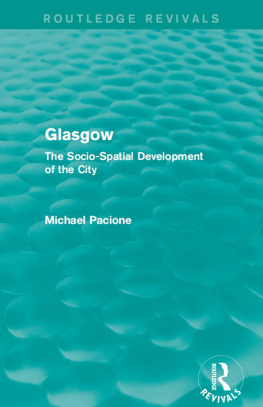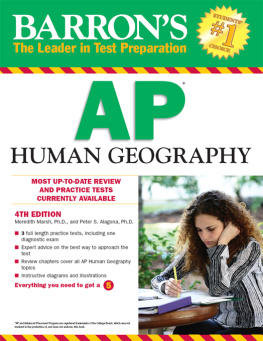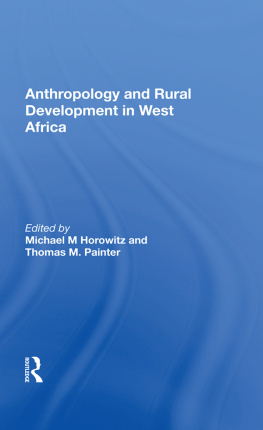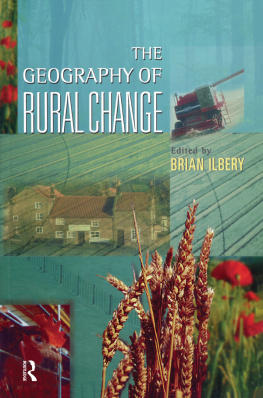Routledge Revivals
Progress in Rural Geography
This wide-ranging volume, first published in 1983, reflects the increasing scope of the field of rural geography in the second half of the twentieth century. Although traditional areas of study such as agriculture and the land-use patterns of the countryside remained important, scholars also began to consider rural transport, employment, housing and policy, as well as to develop new theories and methodologies for application to study. The chapters included here addressed the need for a review of the changes that had taken place within the field of rural geography, and as such provide an essential background to students with an interest in rural demography, planning and agriculture.
First published in 1983
by Croom Helm Ltd
This edition first published in 2013 by Routledge
2 Park Square, Milton Park, Abingdon, Oxon, OX14 4RN
Simultaneously published in the USA and Canada
by Routledge
711 Third Avenue, New York, NY 10017
Routledge is an imprint of the Taylor & Francis Group, an informa business
1983 Michael Pacione
All rights reserved. No part of this book may be reprinted or reproduced or utilised in any form or by any electronic, mechanical, or other means, now known or hereafter invented, including photocopying and recording, or in any information storage or retrieval system, without permission in writing from the publishers.
Publishers Note
The publisher has gone to great lengths to ensure the quality of this reprint but points out that some imperfections in the original copies may be apparent.
Disclaimer
The publisher has made every effort to trace copyright holders and welcomes correspondence from those they have been unable to contact.
A Library of Congress record exists under LC control number: 82022756
ISBN 13: 978-0-415-70709-1 (hbk)
ISBN 13: 978-1-315-88668-8 (ebk)
1983 Michael Pacione
Croom Helm Ltd, Provident House, Burrell Row,
Beckenham, Kent BR3 1AT
British Library Cataloguing in Publication Data
Pacione, Michael
Progress in rural geography.
1. Rural geography
I. Title
910.091734 G115
ISBN 0-7099-2021-0
First published in the USA 1983 by
Barnes & Noble Books
81 Adams Drive
Totowa, New Jersey, 07512
ISBN 0-389-20358-0
Typeset by Leaper & Gard Ltd, Bristol
Printed in Great Britain
by Billing and Sons Ltd Worcester
CONTENTS
TO MICHAEL JOHN
Rural geography has a long tradition but until recently it generally referred to studies concerned with agriculture or comprised historical analyses and descriptions of the settlement or land-use patterns of the countryside. Although these areas of investigation retain their importance within the subject today, rural geography has expanded over the last decade to encompass other lines of enquiry such as the systematic study of rural transportion, employment and housing; assessments of development policies in rural areas; and attempts to develop theory and methodology in rural studies. The range and volume of work carried out under the umbrella of rural geography during the 1970s generated considerable enthusiasm for the subject and the momentum built up has ensured a central position for this branch of the discipline in the 1980s.
A result of this growing popularity and research activity is that scholars face a major task in maintaining contact with recent developments, keynote statements and relevant articles spread across a wide range of professional journals and less accessible reports. This volume is a direct response to the need for a text which reviews the progress and current state of the subject and which provides a reference point for future developments in rural studies. This collection of original essays is designed to encapsulate the major themes and recent developments in a number of areas of central importance in rural geography.
Michael Pacione
University of Strathclyde
Glasgow
A full understanding of contemporary change in the built countryside cannot be gained without reference to the historical development of the settlement pattern. In Michael Bunce analyses the evolution of the rural settlement pattern in Europe and North America. He first reviews several taxonomic approaches to the study of rural settlement and provides a critical examination of the nucleation-dispersal model, before specifically considering the influence of economic factors on the location and distribution of rural settlements. The importance of external forces, such as the rise of commercialism and urbanism in the post-medieval period, on the growth of rural market centres and, more recently, the adjustments forced on rural settlements by the scale and pace of urbanisation and industrial development are emphasised. He concludes that the plethora of theoretical and generalising ideas which have been proposed over the past century or more has identified the basic processes and factors which govern the development of settlement patterns. These include the influence of environment and culture on location and form; the fundamental relationship between settlement, resources and land use; and the competitive forces of the space economy. However, he cautions that this represents only a partial explanation, for it embodies a high level of generalisation and implies a degree of determinism which is not always appropriate for the interpretation of the complex adaptations of general factors to local conditions.
The growing pressure on rural land arising from the extension of urban influences, and the increasing competition among traditional land uses are matters of current concern. In productive rural area. Finally the conflict between agriculturalists and conservationists in the intervening zone or farmscape is examined. Several topics are identified for further research, including cost-benefit analyses of alternative levels of rural-urban land conversion; investigation of the compatibility of different land uses; and the monitoring of management experiments aimed to minimise land-use conflicts.
Farm structure, or the size and spatial arrangement of land holdings, is a fundamental factor in agricultural production. In Ian Bowler analyses the key processes of land consolidation and farm enlargement in developed economies. He begins by examining the socio-cultural, economic and physical causes of land fragmentation and discusses the measurement problems attached to international study of the phenomenon. He illustrates that at a low level of economic development advantages may be realised by such an arrangement of holdings but once a commercially-oriented agriculture develops fragmentation increasingly imposes economic costs on farming. The process of land consolidation is then examined and the progress of government schemes in a number of countries is evaluated. In the second part of the chapter a similar interpretive structure is applied to analyse the phenomenon of farm enlargement. Finally several issues are pinpointed for further investigation. These include the need for more sophisticated techniques to measure the spatial patterns of land and farm fragmentation; an international survey of the progress made by consolidation schemes; examination of the causes of the spatial variation in the spontaneous process of farm enlargement; study of the agricultural costs and benefits of farm fragmentation; and assessment of the social consequences of structural change in agriculture.
In employment statistics it is clear that employment in British agriculture has fallen for over a hundred years and continues to fall annually. The suburbanisation of the countryside around towns has meant that the real employment problem is to be found in the remoter and upland areas. Following an examination of the nature of this dilemma and an assessment of possible solutions it is concluded that a co-ordinated approach by public bodies and the encouragement of locally-based enterprises are essential elements in attempts to alleviate the severe problems facing rural economies.





